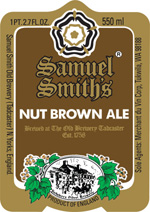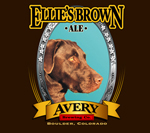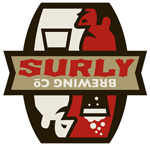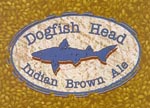Brown ale may never command the attention of IPA or Imperial stout, but neither is it in any danger of fading away. American brewers have ensured a steady number among their more celebrated brews. In Britain, where brown ale is an uncommon find, quite the opposite is true, having declined severely since the 1960s after several decades of great popularity. During the early 20th century, two contrasting modern versions were devised in England, representing Northern and Southern variants. American browns were originally modeled on the Northern English variety, and nouveau interpretations though they are, the relative wealth is an encouraging sign for posterity.
The Roots of Modern Brown
Brown ale of some sort has existed in Britain for centuries, mostly because fire-cured brown malt was used as the primary raw material. Despite pale malt becoming more accessible in the late 17th century, London’s staple brew of this era was the sweet and lightly hopped “common” brown ale. It was often of poor quality and generally not well-regarded. Common brown gave way to a darker brown “beer,” porter, and given a heavier dose of hops that allowed extended aging and maturation, drier character and better keeping qualities. This displacement sounded the death knell of common brown, as the ascent and domination of porter sent brown ale into virtual extinction. However, as the masses tired of the status quo in the latter 19th century, sweeter beers made a comeback, including mild ale and milk stout.
Mild was initially used to describe the young, sweet condition of ale, porter or stout before acquiring satisfactory “aged” character. It came to also denote ale specifically made to consume fresh, without intent to age. Generally pale in color, modestly hopped, sweet and served shortly after cask conditioning, mild ale was designed to turn over expeditiously. Darker renderings, made with caramel, black and pale malt, began showing up near the turn of 20th century. Brown malt had long been replaced by then in favor of pale and specialty malts recipes.
Coincidentally, bottling technology was progressing nicely about this time, as recently invented screw and crown caps replaced corks. With that came a largely untapped market for bottled beer.
Southern and Northern Browns
The Southern style of modern brown ale originated in the East End of London at Mann, Crossman & Paulin’s brewery, where some of London’s finest mild was brewed. Managing Director Thomas Wells Thorpe went to work crafting a bottled beer, introducing Mann’s Brown Ale in 1902, seizing upon the growing demand for bottled ale and taste for sweeter, dark brews. Brewed to about 5% early on, it is today at 2.8%, a remnant of the general gravity drop in England during and after World War I.
It took a couple of decades for Mann’s Brown Ale to find appreciable success, a timeline that parallels the interest in bottled ale (which was more stable than low-gravity cask ale). Brown ale, ditched a century earlier because of poor keeping qualities, regained favor as a different brew because of its stability. Sales of bottled beer were now increasing (a trend that would continue for decades) and within a few years, bottled brown ale was being produced by nearly every brewer in Britain.
Brown ale and dark mild have always had something of a kinship, though are not necessarily one and the same. Generally speaking, mild was draft ale and brown ale, bottled. Some brewers did bottle their mild, though, billed as brown, while others made different versions of brown based on strength or attenuation. Those that bucked the gravity-drop trend made “double” browns in the range of 1.050 OG.
The most famous of the so-dubbed “Northern” style, Newcastle Brown Ale, came from the Newcastle Breweries to capitalize on the bottled ale trend. Brewmaster Col. James H. Porter and brewery chemist Archie Jones worked on the project for three years before Newcastle Brown Ale was introduced in 1927. It was paler and stronger than the Southern style. It won the Challenge Cup for bottled beers at the 1928 Brewers’ Exhibition in London. Samuel Smith’s Nut Brown Ale is a darker, fuller, hoppier and more flavorsome example of the Northern style.
Brown (and mild) ale held significant market share until the 1960s as consumers’ preferences changed once again and breweries closed. The brown ales came to be seen as a bit antiquated. Only the recent nostalgic interest in traditional styles has helped them hang on in Britain.
Northern and Southern English brown ales have very little in common (the reddish-amber vs. dark-brown color alone reflects that), just as they have no real connection to London’s old common brown or those that came before. But at least there are reference points to separate the two. The Northern style is more familiar, as there are a few available through wide distribution, whereas the Southern versions are far more obscure, and essentially limited to Britain. Most beer historians would consider Mann’s the authentic, archetypical modern English brown ale. Author Martyn Cornell calls the Southern style “critically endangered.”
But beer styles are historically labile, and so they continue to evolve, especially as modern brewers take their turn. It is possible to make contemporary American interpretations with deference those venerable versions, as many brewers do. We can take solace in knowing that at least Northern brown is alive and well in America, and recognize it for what it is.
American Brown Ale
English-style brown ale was actually brewed in America on the East Coast as a fall/winter seasonal by a few brewers before and after Prohibition. They were advertised with English imagery and a promise of fuller flavor. Those fell victim to the watering down of American beer in the mid-20th century.
American brown ale was essentially reinvented by Pete Slosberg in 1986. Proficient enough to deem his homebrewed brown worthy, he acted on his commercial aspirations. Pete’s Brewing Co. was founded and Pete’s Wicked Ale introduced in 1986. Wicked Ale, meant to emulate Samuel Smith’s Nut Brown Ale, was ruddy brown, rich and pleasantly hoppy. It was a relatively modest and broadly agreeable ale that added yet another style to the expanding American portfolio.
Most brown ales spawned during the early heyday of the microbrew revolution in America were based on Slosberg’s original, and even today the majority that prototype: lightly roasted, chocolate and caramel malty character, fair to firm hop presence, red-brown color and medium gravity.
Of course, American brewers added a bit of their own Yankee flair. Hopped-up and imperial renditions were brewed to satisfy the hopheads and high-gravity lovers, as were those toned down some to express a sweeter, malty character. Brown ale can deftly handle all of those. Given all of this, it is apparent that American brown ale exists as a rather broad family of brews, with well-balanced, hoppy or strong versions, as well as those that blend those attributes.
Brown Ale Character
As the name would imply, they are quite reliant on dark-character malts. Medium-to-dark caramel and chocolate malt are most often the preferred flavor/aroma/color/body enhancers, followed by black patent malt or roasted barley. Toasted malts, such as Munich or biscuit, are not uncommon, and the odd recipe may include an authentic touch of brown or amber malt. Oats and wheat, malted or otherwise, may also be included. Alcohol by volume from 5% to 7% is pretty standard, with imperials at 7% to 9% or occasionally higher. English ingredients are often used, perhaps as a nod to tradition and respect, but mostly because those fruity byproducts and earthy undertones marry perfectly with the dark malts.
As one of the oldest types of beer, brown ale has seen many changes, but has rightfully endured. In Britain, an interest in nostalgic brewing and beer styles may yet restore some of brown ale’s popularity. In America, they remain a vital part of the story, both in its brief history and in the taproom. Beers such as this should always have a place at the bar.
This story appears in the May issue of All About Beer Magazine. Click here for a free trial of our next issue.

Samuel Smith's Nut Brown Ale
ABV: 5Tasting Notes: Samuel Smith’s lineup is crafted at the Old Brewery at Tadcaster, Yorkshire’s oldest, fermented in Yorkshire squares of stone. This bright, copper-brown ale delivers aromas of caramel and light roast, along with a solid herbal hop presence and the underlying butterscotch footprint of the traditional house yeast. The mouthfeel is medium, the flavor slightly sweetish, with some buttery toffee, chocolate and a thread of classic English hops. It finishes with a blend of chewy malt and hop bitterness in near perfect tandem. This is simply a well-balanced, surprisingly hoppy and entirely satisfying ale, about as easy to drink as any at 5%.

Avery Ellie's Brown Ale
ABV: 5.5Tasting Notes: This malt-centric brown ale hails from Avery Brewing Co. in Boulder, CO. Deep brown in color, the mousselike head gives way to a wondrous desserty nose. Rich toasted malt, chocolate and vanilla override a wisp of herbal hops. The creamy mouthfeel is followed by fresh, well-rounded flavors of dark malts, caramel and cocoa. Hops take a back seat in all areas, including the finish, where the sweet maltiness dominates. At 5.5%, it’s beautiful in the glass and delightful on the palate.

Surly Bender
ABV: 5.5Tasting Notes: Surly Brewing Co. has gained quite a reputation in the past decade, and with good reason. Bender packs a ton of character into a 5.5% beer, with a diverse malt bill and sturdy hop profile. Chestnut brown and heady, with an aroma that has a clean maltiness, followed by lighter notes of cocoa and, finally, floral, citrus hops. The silky mouthfeel precedes a flavor of toasted, bready malt, dark cocoa, caramel and American hops to balance things off. Bender finishes dryish and moderately bitter. Overall, Bender is an earthy, multi-faceted brew showcasing a seamless blend of Belgian, British and American ingredients.

Dogfish Head Indian Brown ale
ABV: 7.2Tasting Notes: Indian Brown Ale is a robust year-round offering from Dogfish Head and worthy of every accolade. Strong at 7.2%, it is nonetheless as mellow and unassuming as beers of much less fortitude. Dark brown with a frothy, sticky head, it bursts with floral, aromatic hops and dark malt, vanilla and brown sugar in the nose. Sweet tasting, with the expected caramel and chocolate notes, and a bit of dark fruit and licorice. Reminiscent of brown bread and raisins. It finishes with some hop bitterness and a lingering slick, sugary malt flavor. Indian Brown Ale is elegant, refined and rustic all in one serving.
K. Florian Klemp
K. Florian Klemp is an award-winning homebrewer and general hobbyist.

Leave a Reply